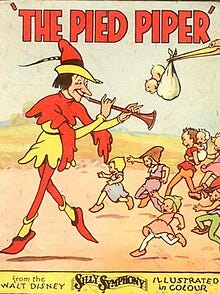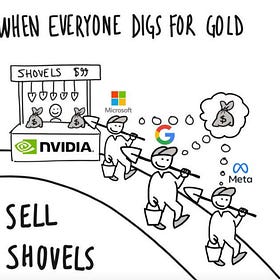You Won't Be Rewarded for Loyalty
Why Loyalty Programs Often Cost More Than They Deliver (Unless You Use Them Right)
Did you know that one of the world’s largest ‘loyalty programs’ isn’t really about loyalty at all?
It’s easy to look at American Airlines as a case study for loyalty programs.
AAdvantage is absolutely huge.
It’s 115 million users would make up the 12th largest country in the world by population.
Not only is it huge—it has real spenders in it.
80% of revenue is estimated to come from loyalty program members.
Wow! Shouldn’t every business have a program like that?

Why don’t they?
Loyalty
Exclusive customer loyalty refers to the consumer's tendency to favor a single brand over competitors, even when alternatives exist.
Marketers (traditionally) have viewed loyalty as a cornerstone of sustainable growth.
You’d be hard pressed to find an MBA program that doesn’t discuss ‘how much cheaper it is to keep existing customers than get new ones’.
There is massive spending every year to create, fund, track, and administer loyalty programs across industries.1
In this post, I challenge this assumption, suggesting that direct loyalty efforts are usually a net cost to businesses, but offer up a way that programs can be used for the benefit of the company overall.
I’ll cover:
Why AAdvantage isn’t a real loyalty program
What marketers get wrong about loyalty
Why loyalty programs generally fail
How using loyalty data in other areas can make a program worthwhile
AAdvantage isn’t a loyalty program
Let’s start by breaking down the AAdvantage story.
Whenever you hear a theory that neatly ties complex human behavior into a well-defined box, you should be skeptical.
On one hand, the huge revenue figures from AAdvantage seem like a great real-metrics display of loyalty from the customer base.
American Airlines has a Net Promoter Score2 [NPS] of 3. That’s 24 points below the abysmal airline industry average. For every happy customer, there is roughly one unhappy one.
How could such a poorly-regarded company have such good ‘loyalty’?
Because the airline experience isn’t actually how American Airlines makes money.
They’re effectively a bank that happens to lose money on planes.

In 2020 American Airlines’ travel business was worth -$19 billion.
The corporation was only held aloft by owning a $25 billion financial services arm incorrectly labeled a ‘loyalty program’.
If you’re running a business that makes money by doing the thing that customers think that you’re doing, you can’t compete with a financial services firm in disguise.
Don’t follow the lead of the Pied Piper airlines
What Marketers Get Wrong About Loyalty
However, the impact of customer loyalty is definitely overestimated.
Every brand…can grow only if it succeeds in gaining new buyers.
Do you ever notice that loyalty program companies always talk about revenue and not profit?
I’ll allow—sometimes companies will mention ROI3—but it should set off your spidey senses when a business doesn’t talk about profit.
Poorly-structured loyalty programs reward the biggest spenders with disproportionately large rewards for behaviors they were already likely to exhibit!
For slim margins, even small discounts can destroy profits. Programs that don’t drive significant new behaviors simply aren’t sustainable.
They made $2.01 of net profit for every $100 of goods sold last year.
If you offer any kind of significant financial incentives for the loyalty program, you’re going to destroy profits.
I wouldn’t change my behavior for a 1% discount at a grocery store (even if it came at the right time on the right channel).
And even if they could offer that, they would lose 50% of their profit margin!
To make up for that 1% discount, any customer would need to DOUBLE their spend just for the company to be even on actual profit.
“Revenue is vanity; profit is sanity; cash5 is king”
Why Loyalty Programs Fail
Loyalty programs generally fail for two main reasons:
1. They Don’t Change Much
Loyalty programs often reinforce existing consumer behaviors rather than encouraging new ones.
For instance, frequent buyers may benefit from discounts, but their purchasing habits remain largely unchanged—dropping the overall profit margin and adding liabilities to a balance sheet. (see above example)
2. They Don’t Usually Capture New Customers
Data from marketing research shows the limited role of loyalty schemes in expanding a brand’s customer base.
These initiatives primarily reward existing, loyal customers without attracting new audiences, missing the crucial element for long-term growth.
But fear not, loyalty programs can be useful but only if you plan effectively (and with an eye to marketing fundamentals).
How to Turn a Loyalty Program into a Worthwhile Investment
While loyalty programs struggle to justify their cost through traditional metrics, there is one area where they shine: high-quality data.
Loyalty programs are (freely given) goldmines6 of actual customer insights7, and the real value lies in using that data to understand customers better.
Here are a few ways that your newly generated data can be used:
1. Map Customer Behavior to Business Strategy
Loyalty programs capture a wealth of information about customer purchase habits, preferences, and frequency. Instead of just rewarding repeat purchases, this data can help businesses answer fundamental questions like:
Which products drive the most repeat purchases?
What time of year do customers engage most with the brand?
Which customer segments contribute the most to revenue/profit?
For example, analyzing transaction data might reveal that customers in one region prefer premium products, while others are more price-sensitive. These insights can inform regional pricing strategies, inventory planning, and the design of marketing campaigns.
2. Optimize Inventory and Supply Chain
The detailed purchase patterns gleaned from loyalty programs can improve demand forecasting. Instead of relying on broad seasonal trends, businesses can predict demand at a more granular level. This reduces overstocking and understocking8, which directly impacts profitability.
Consider a grocery chain using loyalty data to track how often customers purchase staples like milk or bread.
If data shows a surge in demand for oat milk in urban areas, the chain can adjust its supply chain to focus on those markets, reducing waste and keeping shelves stocked.
3. Personalize Customer Engagement
Loyalty programs allow businesses to deliver hyper-targeted marketing. Instead of sending generic offers, companies can use data to tailor promotions to specific customer segments. This strategy boosts conversion rates and maximizes the ROI of marketing spend.
For instance, a coffee shop chain might notice that a segment of loyalty members frequently orders iced lattes in the summer but disappears in winter. Targeting these customers with a winter-themed latte promotion could reignite their engagement.
Personally, I actually look at the coupons on receipts from grocery stores and often will return to use them—but only if they’re relevant.
4. Identify and Mitigate Churn Risk
Customer retention is often cheaper than acquisition, but not all customers are equally worth retaining.
Loyalty program data can highlight at-risk customers—those who used to visit frequently but haven’t made a purchase in months. By identifying these patterns early, businesses can intervene with targeted offers or personalized messages.
With more targeted outreach, you can suppress discounts for likely buyers (maximizing profit) while still retaining at-risk segments.
5. Fuel Product Innovation
Loyalty program data can also guide product development.
If data shows a rising interest in grass-fed meats, a restaurant chain might experiment with new vendor options. By aligning product innovation with proven customer interests, businesses can reduce the risks of R&D while still allowing for experimentation.
6. Create Cross-Sell and Up-Sell Opportunities
Loyalty program data can get you inside the minds of your customers.
Instead of relying on your personal experience & intuition for ‘related product’ pages, you can use loyalty data (as well as segmentation analysis) to capture interest and truly offer related products.
Conclusion
Loyalty programs don’t always (and often don’t) succeed as stand-alone profit drivers.
When used strategically, the high-quality data they generate can offer invaluable insights that can provide meaningful use across marketing, operations, and product development.
How To Make Your AI Projects Fail 100% of the Time
If you're already generating this high-quality data, you should check out how to use it for AI applications as well.
The secret to turning loyalty programs into a worthwhile investment isn’t in how much revenue9 they directly generate but in how well businesses leverage the insights they provide.
By shifting focus from rewards to data, companies can unlock the true potential of loyalty programs—and drive sustainable, long-term growth.
Key Takeaways for Businesses
Leverage Data Beyond Loyalty: Use insights from loyalty programs to inform broader marketing strategies, including product development, audience creation, and advertising targeting.
Measure Profitability, Not Just Revenue: Focus on (profit) ROI and profitability metrics to evaluate a program’s true impact, avoiding the trap of revenue-centric assessments.
Align Incentives with Growth Goals: Reward behaviors that contribute to sustainable growth, such as exploring new categories, increasing purchase frequency, or trying premium offerings.
Note: I’ll be on vacation for the next few weeks. Expect new posts to start again in January!
The exact number is somewhat hard to find for this. The estimates for ‘loyalty spending’ will sometimes overshoot the goal and include spending on core business tools like a CRM or data analytics tools. Sometimes, the estimates will only include the direct cost of rewards being offered which undershoots the true cost of ownership by missing the opportunity costs as well as the costs of administering the program itself.
A measure of how many people are happy vs unhappy with the company. You count the number of happy customers and subtract the number of unhappy customers (roughly)
But you should look at how it’s calculated! Usually companies will calculate ROI as incremental *revenue* per dollar spent on loyalty programs
Caveats:
This doesn’t include the fact that Kroger already has a loyalty program that discounts foods
I’m assuming a flat rate incentive which no one does
I understand that I’m picking a low margin industry—retail (especially etailing) can be 50% margin
or points. IYKYK
It’s freely
Instead of the often-wrong purchased customer data
But be careful! Not all inventory is equally useful to customer decisions. For example, the week of Thanksgiving, not having a turkey might be enough to turn a customer away from the store as a whole—even if the store had everything else on the list.
You won’t get data on this from purchases, so it might fly under the radar.
Spidey sense!







